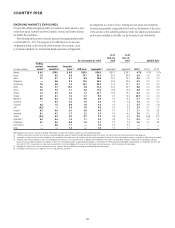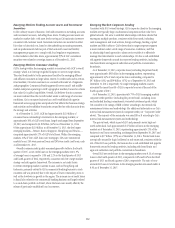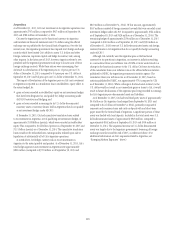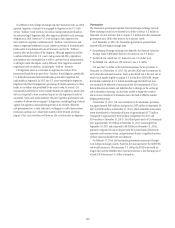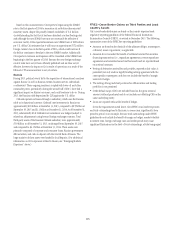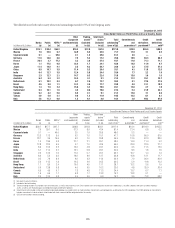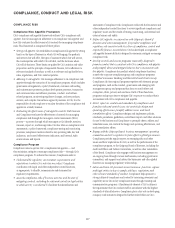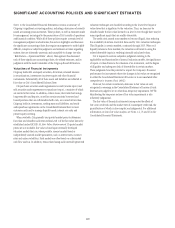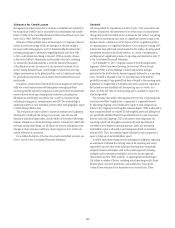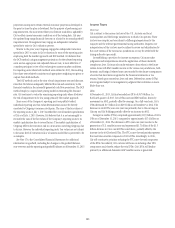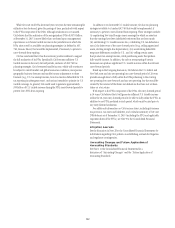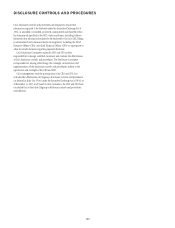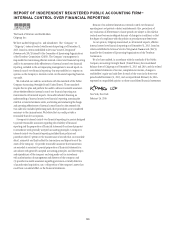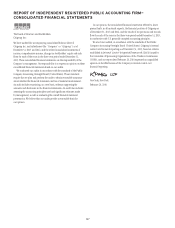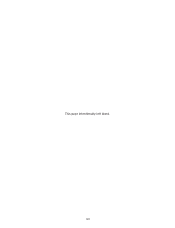Citibank 2015 Annual Report Download - page 136
Download and view the complete annual report
Please find page 136 of the 2015 Citibank annual report below. You can navigate through the pages in the report by either clicking on the pages listed below, or by using the keyword search tool below to find specific information within the annual report.118
culture, such as an interactive course on ethics and leadership for
employees, which included training on using an ethical decision-making
framework to challenge decisions by Citi’s businesses.
• Enhance the compliance program. Compliance fulfills its obligation to
enhance the compliance program in part by using results from its annual
compliance risk assessment to shape annual and multi-year program
enhancements.
Volcker Compliance Program
The Volcker rule required Citi to develop and provide for an enhanced
compliance program reasonably designed to ensure and monitor compliance
with the rule’s prohibitions and restrictions on proprietary trading and
covered fund activities and investments. Citi’s Volcker rule office, which
reports to business management, has responsibility for overall coordination
and monitoring under its compliance program, including project
management and process support, and providing assistance in coordinating
engagement with and among Citi’s second line of defense. For additional
information, see “Risk Factors—Regulatory Risks” and “—Compliance,
Conduct and Legal Risks” above.
CONDUCT RISK
Citi manages its exposure to conduct risk through the three lines of defense,
as discussed above. Each employee in each line of defense is guided by
Citi’s mission and value proposition and the principle of responsible
finance. Citi’s leadership standards, which are aligned with Citi’s mission
and value proposition, outline Citi’s expectations of employees’ behavior,
and employees’ performance is evaluated against those standards. Citi’s
businesses and functions are responsible for managing their conduct
risks. Compliance advises Citi’s businesses and other functions on conduct
risks and associated controls. Internal Audit, among other things, assesses
the adequacy and effectiveness of Citi’s management of and controls
for conduct risk.
In 2015, Citi issued a conduct risk policy to further the objectives of its
Compliance-led conduct risk program, which was established in 2014 to
enhance Citi’s culture of compliance and control through the management,
minimization, and mitigation of Citi’s exposure to conduct risk. Citi uses the
MCA process to assess the design and operation of controls that are utilized
to manage the institution’s conduct risks. Citi also manages its conduct risk
through other initiatives, including various culture-related efforts.
LEGAL RISK
Citi views legal risk as qualitative in nature because it cannot be reliably
estimated or measured based on forecasts rather than actual results using
statistical methods and does not lend itself to an appetite expressed through
a numerical limit. As such, Citi seeks to manage this risk in accordance with
its qualitative risk appetite principle, which generally state that activities in
which Citi engages and the risks those activities generate must be consistent
with Citi’s underlying commitment to the principle of responsible finance
and managed with a goal to eliminate, minimize or mitigate this risk, as
practicable. To accomplish this goal, legal risk is managed in accordance
with the overall framework described in greater detail in “Managing Global
Risk—Overview” above.
REPUTATIONAL RISK
Citi’s reputation is a vital asset in building trust with its stakeholders, and Citi
is diligent in communicating its corporate values, including the importance
of protecting Citi’s reputation, to its employees, customers and investors. The
responsibility for maintaining Citi’s reputation is shared by all employees,
who are guided by Citi’s Code of Conduct. Employees are required to exercise
sound judgment and common sense in every action they take and issues
that present potential franchise, reputational and/or systemic risks are to be
appropriately escalated. The business practices committees for each of Citi’s
businesses and regions are part of the governance infrastructure Citi has in
place to properly review business activities, sales practices, product design,
perceived conflicts of interest and other potential franchise or reputational
risks that arise in these businesses and regions. These committees may also
raise potential franchise, reputational or systemic risks for due consideration
by the business practices committee at the corporate level. All of these
committees, which are composed of Citi’s most senior executives, provide the
guidance necessary for Citi’s business practices to meet the highest standards
of professionalism, integrity and ethical behavior consistent with Citi’s
mission and value proposition.





